Unified communications (UC) has evolved from a basic business phone system into a mission-critical platform driving enterprise-wide collaboration. By integrating instant messaging, voice, video, and collaboration tools into a single platform, UC enables organizations to maintain connectivity and productivity.
However, the communication requirements of a 20-person startup differ significantly from those of a global enterprise. Larger organizations face added complexity: thousands of employees, multiple brands, and strict regulatory standards.
This guide examines the key distinctions between enterprise UC and small business UC, highlighting the capabilities that large organizations need for efficient communication. It provides IT leaders, CIOs, and heads of digital transformation with insights into the core requirements and use cases driving enterprise UC adoption today.
Enterprise UC vs. Small Business UC: What’s the Difference?
Scale and complexity
For large organizations, scale isn’t simply about accommodating more users. Because enterprises have a greater number of moving parts, enterprise UC requires tools designed for larger-scale operations. The platform needs to be capable of orchestrating collaboration across regions, departments, and distinct business units.
Unified Communications as a Service (UCaaS) must support:
- Hundreds to thousands of concurrent users
- Global office coverage and connectivity
- Redundant infrastructure for high availability
- Collaboration across multiple brands or subsidiaries
Small businesses can often thrive with standardized, pre-configured tools. However, enterprises demand tailored deployments with clear change management strategies and flexible provisioning.
Security and compliance
For enterprises, security and compliance are vital to operational resilience.
UC platforms must meet rigorous compliance standards, especially when thousands of team members are handling sensitive data daily:
- Health Insurance Portability and Accountability Act (HIPAA): Protects patient health information, crucial for healthcare organizations and their partners.
- General Data Protection Regulation (GDPR): Requires strict data handling practices for companies operating in or serving the EU.
- Service Organization Control 2 (SOC 2): Focuses on data security, availability, processing integrity, confidentiality, and privacy.
- Encryption in transit and at rest: Ensures that sensitive data is protected during both transfer and storage.
- Audit trails and retention policies: Maintains detailed logs to support compliance audits and regulatory requests.
- Admin-level controls: Enables IT teams to assign user roles, restrict access, and track activity to prevent misuse or breaches.
Failure to meet these standards increases the risk of operational disruption, regulatory penalties, and reputational damage.
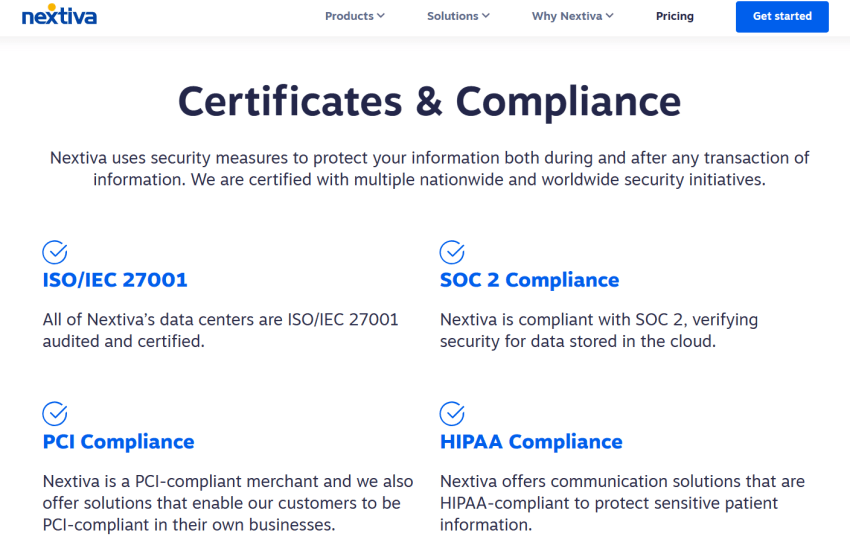
Customization and interoperability
Enterprise UC needs to function as part of a broader digital ecosystem. Large organizations often rely on dozens of interconnected platforms — including CRM, ERP, HRIS, ITSM, analytics, and identity management systems. That’s why customization and interoperability are crucial.
Key enterprise requirements include:
CRM and ERP integrations (e.g., Salesforce, Oracle)
The seamless synchronization between UC systems and enterprise CRM and ERP tools ensures unified workflows. Integrations with tools like Salesforce empower sales teams to engage customers directly from the CRM, automatically log interactions, and trigger context-aware follow-ups or reminders. This reduces friction, enhances visibility, and supports more intelligent decision-making.
Open APIs for workflow customization
Open APIs enable enterprises to build tailored automations aligned with specific business needs. This is seen, for instance, in routing phone calls based on ticket priority in Zendesk or triggering notifications in Slack when a high-value customer leaves a voicemail.
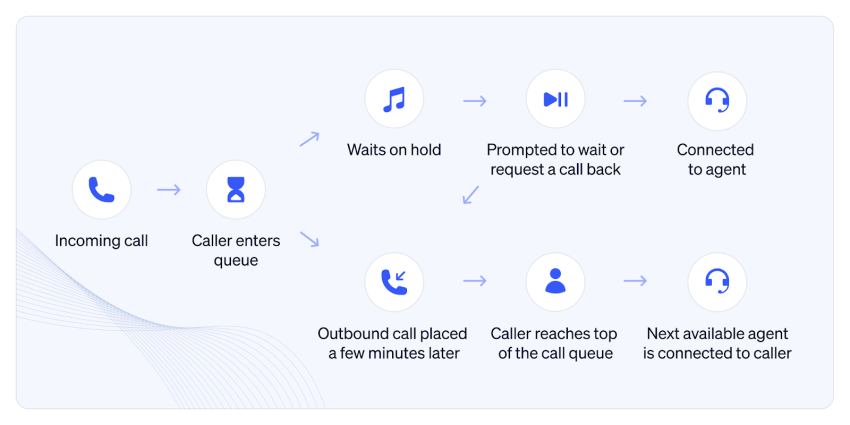
Directory syncing with Microsoft Entra ID or Okta
Identity providers allow enterprises to manage user access and provisioning at scale. Integrating UC solutions with IdPs like Microsoft Entra ID is essential for centralized user management. These platforms automatically assign roles, permissions, and devices as employees onboard, change departments, or exit the organization. This improves onboard speed, reduces operational risk, and strengthens compliance.
Small businesses typically opt for out-of-the-box tools with limited customization, which can serve their immediate needs.
Support needs
Enterprise leaders require instant support that aligns with complex business and team requirements. Enterprise-level UC must offer:
- 24/7 support with SLAs. Global enterprises demand continuous operational reliability. Round-the-clock support backed by service level agreements (SLAs) drives rapid issue resolution and safeguards critical business functions across time zones.
- Dedicated account managers. Enterprises benefit from having a single point of contact who deeply understands the nuances of their UC deployment. An account manager offers strategic oversight, guides upgrade planning, advises on best practices, and serves as an internal advocate to align services with business priorities.
- Custom onboarding and training. For large-scale enterprises, onboarding must go beyond technical setup. It must incorporate user training, change management, and in-person or hybrid workshops. A robust onboarding process ensures higher adoption rates and minimizes business disruption.
- Tier 2 and Tier 3 engineer support. While frontline support resolves routine incidents, complex disruptions require immediate escalation to senior engineers. Tier 2 and Tier 3 support staff have deeper technical knowledge to diagnose and resolve issues with integrations, infrastructure conflicts, or data security concerns.
Enterprises increasingly expect support strategies that reflect the complexity and scale of their operations. They require expert guidance aligned with their business objectives. Meanwhile, smaller businesses can rely on knowledge bases or shared support queues, given their simpler support requirements.
Budget and ROI focus
Every dollar allocated to technology must be justified not only by its capabilities but also by the outcomes it enables. CIOs, CFOs, and business unit leaders are looking for specific business outcomes. Unified communications, when effectively deployed, offers a rare intersection of operational efficiency, strategic agility, and customer satisfaction.
Productivity gains
ROI is measured in both the minutes saved and the outcomes accelerated. More productive and efficient systems translate directly into more time invested in enterprise priorities. Industry reports indicate that effective UC deployment can reclaim several hours per employee per week, previously lost to inefficient communication or context switching. This directly impacts project timelines and operational speed.
Customer experience improvement
According to PwC, 43% of buyers are willing to pay more for a better, more convenient user experience. When evaluating ROI, enterprises ask: Does this improve NPS? Does it reduce customer churn? Does it empower agents to resolve issues on first contact?
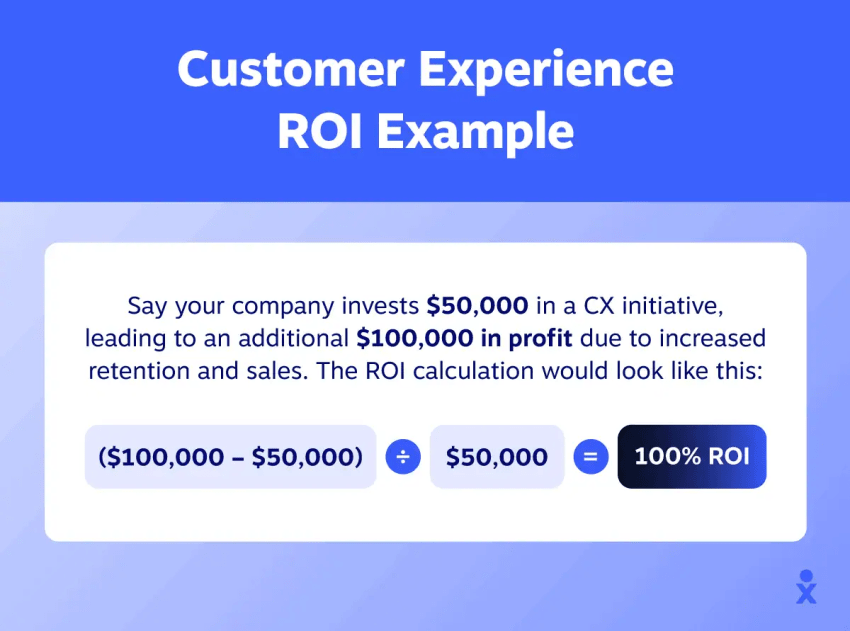
Uptime assurance
Downtime hurts revenue, especially in sectors like healthcare, logistics, or financial services. Enterprise-grade UC solutions need to back uptime promises with proof of resilience. These include SLAs, geo-redundancy, and proactive monitoring. Consistent uptime prevents direct revenue loss, which can amount to thousands or even millions per hour for large enterprises. It also preserves brand reputation and customer trust, which are invaluable assets.
Vendor consolidation
Enterprises increasingly seek to streamline their tech stacks. Maintaining separate tools for messaging, video conferencing, telephony, and more strains budgets and fragments data. Consolidating these onto a unified platform can lead to direct cost savings on licensing fees and IT management overhead while simplifying the user experience and data governance.
SMBs tend to prioritize cost-effectiveness and rapid deployment. Enterprises, on the other hand, focus on future-proofing and functionality at scale.
Key Requirements for Enterprise Unified Communications
Scalability
Enterprises need UC systems that perform reliably as user counts grow. The platform must handle rapid onboarding, high call volumes, and distributed teams without bottlenecks.
- Multi-site support
- Easy onboarding for new users/locations
- Centralized management
Cloud-based deployment
Most enterprise IT teams prioritize UCaaS to reduce infrastructure overhead and improve flexibility. Hybrid options remain essential for companies transitioning from legacy systems.
- Full cloud for new branches
- Hybrid for legacy system transitions
Real-time communication
Communication tools must deliver instant, uninterrupted connectivity. Enterprises require high-quality voice and video across all endpoints, including mobile and desktop.
- Low-latency performance
- 5G and SD-WAN compatibility
- Desk phone, softphone, and mobile app support
Interdepartmental and external collaboration
Teams across departments need consistent tools to exchange information quickly. A strong enterprise communications platform supports real-time updates, secure file sharing, and streamlined virtual meetings.
- Team messaging
- File sharing and version control
- Secure guest access
- Virtual whiteboarding and screen sharing
CRM and business app integration
Unified communications systems must integrate with core business systems. This ensures seamless workflows across sales, marketing, support, and project management.
- Salesforce, HubSpot, Microsoft Dynamics
- Slack, Google Workspace, Microsoft 365
- Project tools like Jira or Asana
Advanced call routing and IVR
Efficient routing determines how fast customers reach the right person. Enterprises use intelligent IVRs and dynamic routing rules to optimize service and reduce wait times.
- Geo-based call routing
- Skill-based agent assignment
- Multilingual IVR flows
- CRM-driven personalization
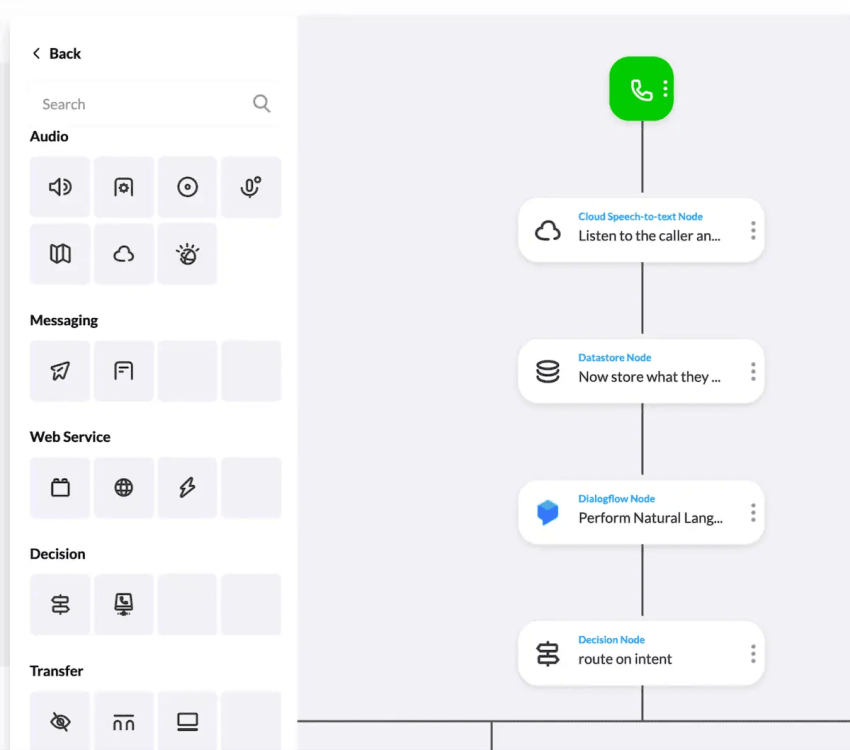
Contact center integration
Contact centers (CCaaS) require deep integration with UC systems to unify communication and analytics. This alignment supports faster resolution times and stronger customer engagement.
- Real-time agent coaching
- Sentiment analysis
- Workforce management dashboards
- Unified analytics across channels
Security and admin controls
Security teams need full control over user access and data handling. Enterprise UC must support compliance frameworks and provide detailed visibility into system usage.
- Role-based permissions
- SSO and MFA support
- Detailed logs and reporting
- Compliance automation
AI and automation
Automation improves response times and eliminates manual tasks. AI UCaaS features like smart routing and meeting transcription help teams stay focused on high-value work.
- Smart meeting summaries
- Auto-transcription
- AI-powered call routing
- Predictive staffing recommendations
Enterprise Workflows That Benefit From UCaaS
UC systems drive cross-functional efficiency. Here are select workflows where the impact is most visible.
Sales
UCaaS allows sales teams to reduce friction and improve conversion by embedding communication directly into their workflows.
- Use click-to-call from CRM
- Record and analyze prospect calls
- Access call history via mobile
Support and contact center
Integrated UC and CCaaS environments improve resolution times and customer satisfaction.
- Single view of customers across communication channels
- Integrated live chat and voice
- AI-powered escalation and routing
Engineering and product
For technical teams, real-time collaboration tools reduce blockers and accelerate product delivery.
- Voice notes or chat threads for async updates
- Video huddles for sprint planning
- Screen recordings for clarity

HR and training
Teams use UCaaS to streamline onboarding, measure engagement, and support real-time feedback.
- Video tutorial onboarding
- Company-wide broadcasts
- Recorded training sessions
Executives and admins
Leaders gain tools for seamless communication, centralized coordination, and faster decision-making.
- Delegated call handling
- Encrypted communication options
- Real-time KPI dashboards that visually represent key communication metrics, operational efficiency, and system health, enabling data-driven strategic decisions
What to Look for in an Enterprise UC Provider
Here’s the UC checklist when deciding on the best platform for an enterprise:
| Requirement | What to Look For |
|---|---|
| Reliability and Uptime | 99.999% uptime SLA, redundant infrastructure |
| Global Reach | International dial plans, regional compliance support |
| Integration Ecosystem | Prebuilt connectors with CRM, calendar, and messaging platforms |
| Admin Tools | Centralized provisioning, user management, usage reports |
| Security Posture | SOC 2, HIPAA, GDPR certifications, call encryption, SSO |
| Support | 24/7 enterprise-grade support, success managers, onboarding specialists |
| Pricing Models | Transparency and scalability; user- or feature-based UCaaS bundles |
Trends Shaping Enterprise UC Today
AI meeting assistants
AI is increasingly being leveraged to drive productivity. AI tools now summarize meetings, tag action items, and send follow-ups. These free up team members from note-taking and tedious admin work.

Converged UC and contact center
Unified platforms are consolidating employee and customer communication. This reduces operational silos, simplifies governance, and improves CX.
Hybrid workforce optimization
With the shift to hybrid work models, today’s UC platforms must level the playing field for in-office and remote work teams. They must ensure quality video/audio, equal access to documents, and virtual water cooler moments.
Business communication trends point toward more seamless communications between team members working on-site and remotely. Communications technology will also be developed accordingly.
Low-code/no-code workflows
IT leaders want platforms that empower business users to build call flows, create chatbots, and automate routine follow-ups without writing a line of code.
Looking ahead
While current trends like AI meeting assistants and UC-CCaaS convergence are transformative, the horizon for enterprise communications promises even deeper integration and intelligence.
Businesses could anticipate a future where UC platforms become proactive partners. These platforms can use advanced AI for predictive communication needs, offer more immersive collaborative environments (integrating augmented or virtual reality elements for specific use cases), and enable hyper-personalization at an unprecedented scale.
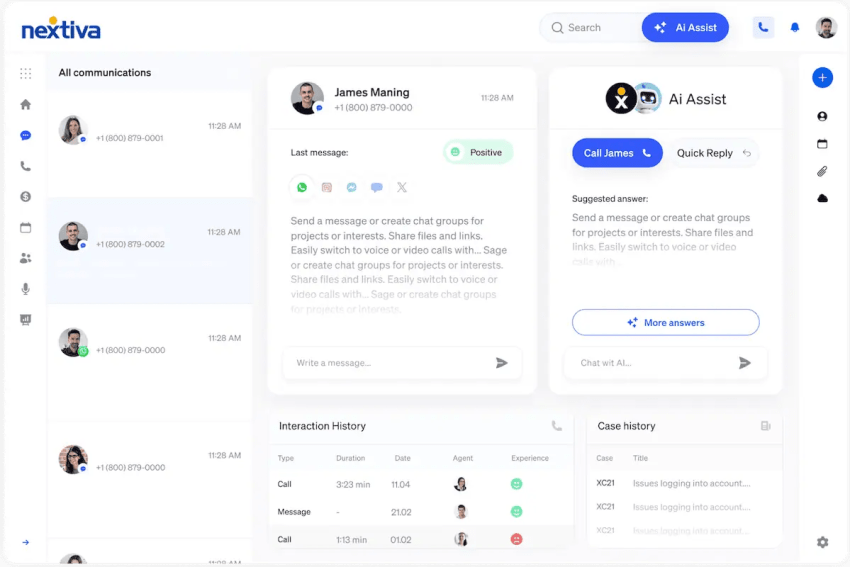
As enterprises continue to navigate dynamic global markets, their UC solutions will evolve into central nervous systems for organizational agility and innovation.
Why Enterprises Choose Nextiva
Top UC companies today include long-established service providers and modern innovators offering cloud-first solutions tailored to enterprise needs. While many vendors focus on scale or niche features, Nextiva stands out by delivering a unified experience across voice, video, messaging, and more. Enterprises seeking a flexible, secure, and integrated UCaaS platform consistently rank Nextiva as a top contender.
- Unified experience across channels: Nextiva connects voice, video, chat, SMS, and email in one seamless platform. No third-party tools are needed.
- Enterprise-ready security and reliability: Nextiva delivers 99.999% uptime SLA, end-to-end encryption, and regulatory compliance for organizations in the healthcare, finance, and government sectors.
- Deep integrations with enterprise apps: Plug into Salesforce, Microsoft 365, Zendesk, and other tools with ready-built connectors.
- Scalable admin and analytics tools: From bulk user provisioning to real-time dashboards, Nextiva helps IT stay in control.
- Embedded AI and automation: Nextiva’s advanced AI capabilities include call summaries, real-time alerts, smart routing, CRM auto-logging, and scalable workflow automation.
- Dedicated support and white-glove onboarding: Your enterprise team gets a dedicated success manager, custom onboarding, and access to US-based, 24/7 expert support.
Use Nextiva for Enterprise UC Solutions
Nextiva delivers the enterprise-grade communication infrastructure critical for organizations facing complex collaboration demands. For companies looking to simplify their tech stack, future-proof their enterprise collaboration strategies and tools, or unlock new productivity gains across departments, Nextiva offers a UC platform that supports these goals.
Explore how Nextiva’s enterprise UC solution helps global organizations scale securely, stay connected, and simplify team collaboration.

















 Customer Experience
Customer Experience 











